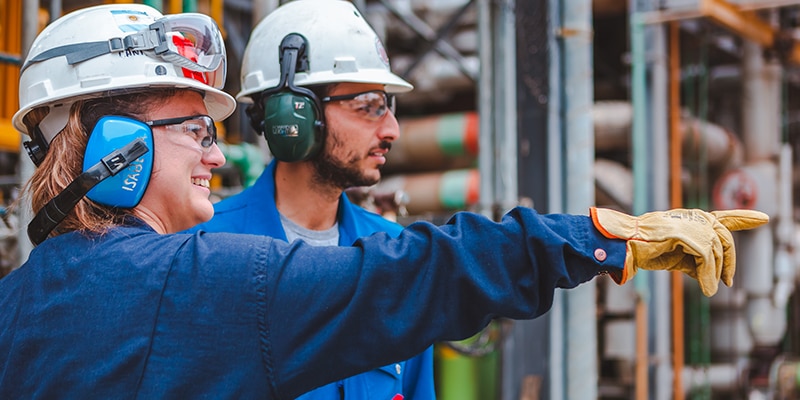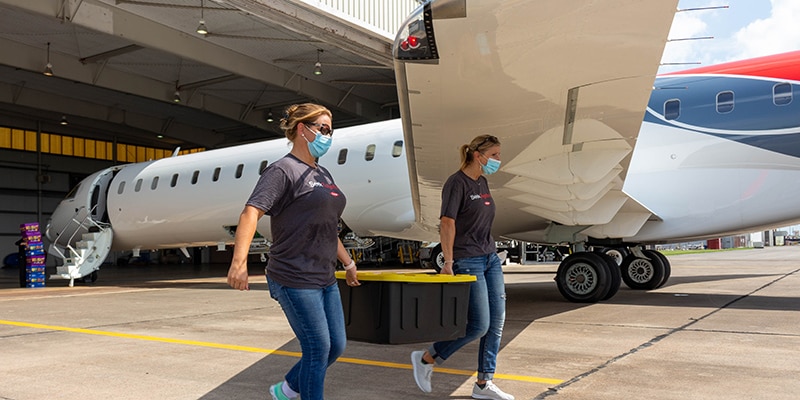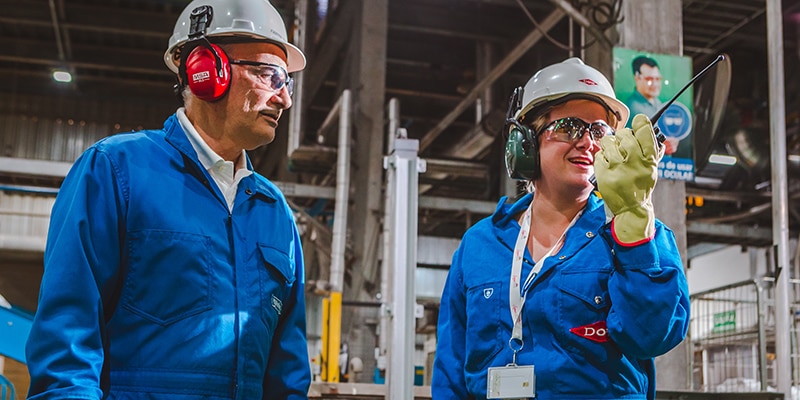With 16 factories, Dow Terneuzen is the second largest production site of Dow worldwide. At Dow Terneuzen, we make plastics and chemicals. These are basic raw materials used to make many plastic products that we all use every day. Examples include food packaging, coatings, insulation materials and mattresses. Dow Terneuzen's plants consist of large installations where plastics and chemicals are made, processed and stored.
How are plastics and chemicals made?
Plastics and chemicals are made from the raw material Naphtha. This is a by-product of crude oil. An important chemical process for making plastics and chemicals is so-called ‘steam cracking’. This happens in our crackers at the Dow Terneuzen site. There are several crackers here; LHC 1, LHC 2 and LHC 3. Steam cracking involves using steam at high temperatures to ‘crack’ the Naphtha, causing it to disintegrate into smaller pieces. This produces chemicals such as: ethylene, propylene, butadiene and benzene. These are raw materials which we then use to make other chemicals and plastics in one of our other plants.
The flare, our most important safety component
Dow Terneuzen has three cracker complexes that form the heart of all the production departments present. Each cracker is equipped with a flare. These are large steel chimneys of about 90 meters high, with a burner at the top. These flares are at a safe distance from the crackers and other factories on the site and are an important part of the crackers' security system. A number of other factories and installations are also connected to a flare.
Why flaring?
During the production process of plastics and chemicals, it may be necessary to flare. Namely during shutdowns and start-ups of factory components, during process disturbances and during maintenance activities. During flaring, gases from the cracker itself or from one of the other plants are burned in the safest and most environmentally friendly way possible. Mixtures of gas and air are led to the flare and burn there in a controlled way. During complete combustion, more than 99.5% of the gases are burned and the remainder that remains after combustion (carbon dioxide and water vapor) is released high into the atmosphere. This minimizes the emission of gases and disperses the remainder. This way, the immediate surroundings are affected as little as possible.
Always on standby
At Dow we work 24/7, so the flares are always on standby. That means we can use them right away if we need to. This agreement is also laid down in our environmental permit. We keep flaring to an absolute minimum, because we want to minimize inconvenience to our surroundings and the environment. In addition, valuable raw materials are lost during flaring, which we also want to prevent.
The flare: what do you notice?
As mentioned, the flares are always on standby. If it is necessary to use one, we distinguish two possibilities; a barely visible pilot flame or a more visible flame. We explain the differences below:
Standby pilot flame
During normal operations, an unobtrusive pilot flame may be visible that occasionally burns minimal amounts of gas.
This is what you can see and hear:
- Light: a small pilot flame on top of the steel chimney
- Smoke: there is hardly any smoke. This ‘standby’ pilot flame is part of the standard production process and is set for optimal combustion
- Noise: the pilot light hardly makes any noise and can therefore not be heard outside our premises
The flame (also called flare)
There are four moments when flaring is necessary. Namely during (partial) shutdown and start-up of a factory, during process disturbances and during maintenance activities. We always try to make combustion as complete as possible by adding steam. This way, the gases are converted into carbon dioxide and water vapor. Especially with sudden, larger disturbances, it may take some time to achieve a complete burn. Soot may be briefly visible above the flame.
This is what you can see and hear:
- Light: apart from the flame itself, depending on the weather conditions, you can see a bright orange glow around the flame
- Smoke: you can sometimes see smoke from flaring, as it is a natural by-product of combustion. By adding steam, we ensure optimal combustion, thus trying to limit the soot as much as possible
- Noise: in order to make combustion as efficient as possible, the gases are rapidly mixed with high volumes of steam and air. This creates a typical humming noise
Safety first
So a flare is a very important safety system. It protects the factories when they start up or shut down and therefore also the colleagues who work in and around the factories. A flare is also necessary to further empty factories of residual gases, for example for major maintenance. The flares are on standby 24/7 and can be deployed directly from the control rooms whenever needed.
Communication
We use our communication channels to keep the surrounding area informed if we need to carry out flaring. When major maintenance is planned, we will indicate this in advance. We always inform DCMR, the Province of Zeeland, the Zeeland municipalities, the Zeeland Safety Region and other organizations involved about flare activities. In the event of unexpected disruptions, we also try to inform the surrounding area as quickly as possible, for example via our social media channels.
Questions and answers
The most frequently asked questions and answers about the flare installation can be found here
Infographic
In this infographic you will find more information about the flare installation





